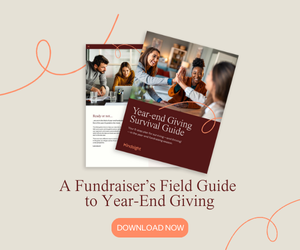Youth in Philanthropy
October 9, 2017
by Roger D. Ali
 During the summer, I visited a number of community events and fairs and was struck by the number of young people around me engaged in some form of philanthropy. The activities ranged from lemonade stands, book sales, and car washes to solicitation of monthly giving by having people sign up using an iPad.
During the summer, I visited a number of community events and fairs and was struck by the number of young people around me engaged in some form of philanthropy. The activities ranged from lemonade stands, book sales, and car washes to solicitation of monthly giving by having people sign up using an iPad.
As a child growing up, I was taught the fundamentals of traditional philanthropy in church and learned about giving in Sunday school. My upbringing instilled a sense of civic responsibility to support my community and give back. Interestingly enough, life’s journey led me to a career rooted in philanthropy, working in leadership roles in the charitable sector for the last two decades.
We have all heard the adage to give of your time, talent and treasure. Research studies show young people are conceptualizing their giving and volunteering in a different way and challenging charities to rethink how they talk about their work and appeal to young donors and volunteers. The next generation of philanthropists and volunteers are looking to be aligned with causes and are encouraging charities and nonprofits to operate in open and fully transparent ways.
Our community needs future donors and philanthropists that are passionate about the causes they support. Young people are learning about volunteering and giving in a variety of ways: through school, their peers, within their communities, and on their smartphones. A new school year is underway, and as Niagara’s youth become inspired to advocate for causes that mean something to them, we need to learn to foster and encourage their civic responsibility. If you are looking to instill philanthropy in your children and students, I recommend the following:
- Teach young children to get involved in a local community event and donate part of their weekly allowance or change collected from doing chores at home. It is always gratifying to see a young child donate money received in lieu of birthday presents to support a cause close to them.
- Encourage high school students to learn more about causes that are meaningful to them and volunteer at a local organization. Opportunities are often available at local volunteer centers and online on the charity’s website or on social media sites.
The best way to teach philanthropy is to be involved with your children in a local fundraising event like a walk, run or bike event, or a project that teaches how philanthropy and volunteering is making a difference in addressing homelessness, poverty or improving the lives of everyone around them.
Connecting with Young People
Charities and nonprofits have an exciting opportunity to engage youth directly about the vital role they play in their mission and philanthropy. Helping them understand community needs and how they can make a difference increases the probability they will become donors and volunteers now and in the future. Don't just show how your work provides immediate impact, but also how your organization makes a tangible difference on wider community or global issues.
The Millennial Impact Report (2013) has uncovered comprehensive data that reveals this rising generation is eager to connect, get involved, and give to causes they’re passionate about, rather than institutions. So, what can you do to inspire youth and show them that their support can make a tangible difference for your charity?
Organizations can fully invest in this generation and maximize the impact of their time, talent and treasure in the following ways:
- Organizations should think “mobile first.” Focus on a responsive design for your mobile website, and website content should be focused on the organization’s work and success stories. Post regularly on your website for the initial source of information, and use Facebook and other social media sites to ensure that young philanthropists stay updated and engaged.
- Millennials view volunteer opportunities as a way to socially connect with like-minded peers, which moves them beyond technology to in-person experiences that can benefit both parties.
The Next Generation of Philanthropy (2015), written by Imagine Canada, explains that organizations will know their message is resonating when Millennials are compelled to share their content. Millennials showed significant interest in using their network of family and friends to fundraise on behalf of causes they were passionate about.
Organizations shouldn’t be afraid to embrace the initiative and inventive nature of young philanthropists either. In The Networked Nonprofit: Connecting with Social Media to Drive Change (2010), Kanter & Fine describe “networked nonprofits” as organizations that aren’t afraid to lose control of their programs and services, branding and messaging. These organizations know that, “in return they will receive the goodwill and passion of many people working on behalf.” These are words to take to heart, as youth will engage with organizations that are willing to take this leap.
This Fall, take the time to understand and develop the next generation of volunteers and philanthropists now. They are ready to conquer the world, starting with your organization.
Roger D. Ali is the president & CEO of OneFoundation, Niagara Health System and chair of the Association of Fundraising Professionals Foundation for Philanthropy - Canada.



